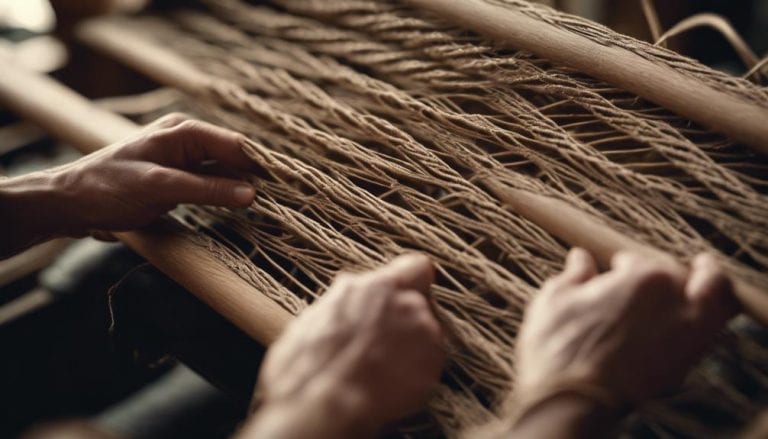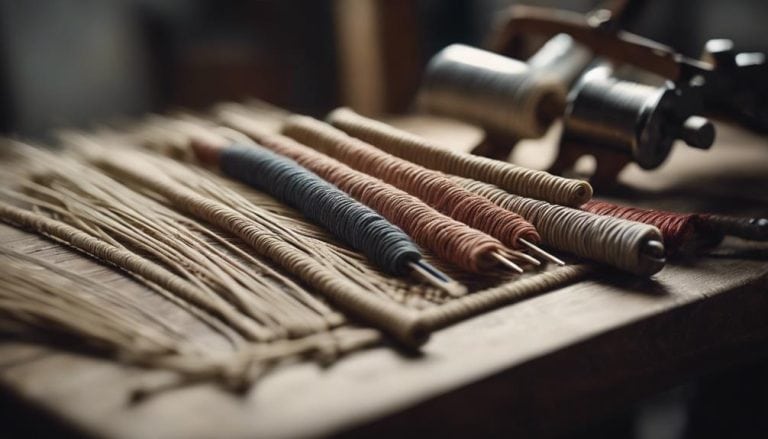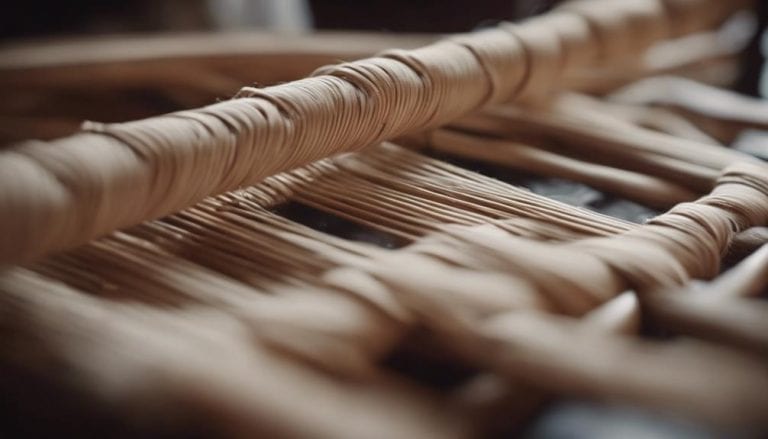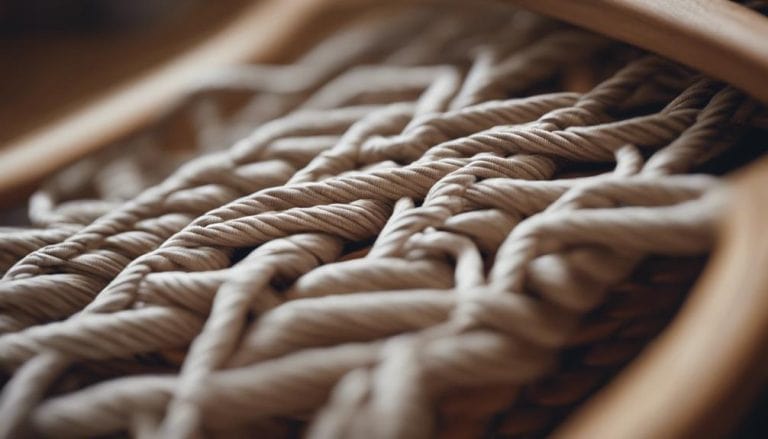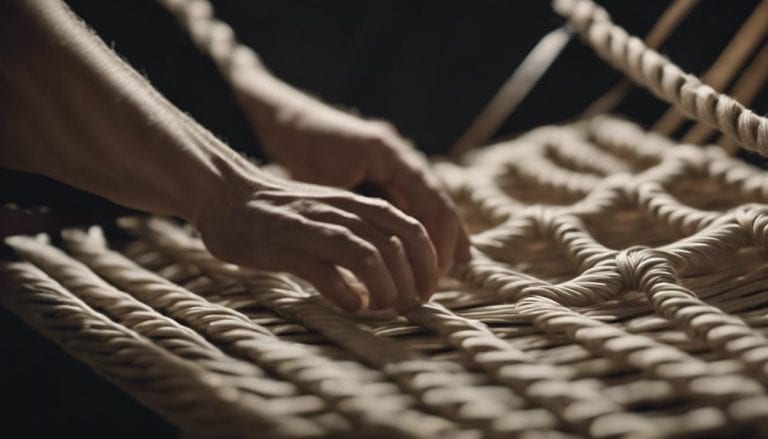Danish Cord Weaving Techniques for Professionals
As I explore the intricate world of Danish Cord Weaving Techniques for Professionals, I find myself fascinated by the delicate balance between tradition and innovation. The fusion of age-old weaving methods with modern design principles opens up possibilities for furniture artisans seeking to elevate their craft.
With a keen eye for detail and a dedication to mastering the art of Danish cord weaving, one can unlock a treasure trove of techniques that promise to transform furniture restoration projects into true works of art.
Danish cord weaving techniques are essential for professionals in the craft. Mastering these methods can elevate your skills and create stunning woven designs.
Key Takeaways
- Danish Cord Weaving blends Scandinavian design with intricate patterns.
- Mastery of advanced patterns requires attention to detail and creativity.
- Utilize efficient tools like weaving shuttles for weaving excellence.
- Attention to detail and precise tension ensure seamless joints and durability.
History of Danish Cord Weaving
Danish Cord Weaving has a rich history rooted in the traditional craft of using paper cords around wooden frames that originated in Denmark. This technique originates in the Scandinavian region, where skilled artisans honed the art of weaving intricate patterns to create sturdy yet visually appealing furniture pieces. The Scandinavian origins of Danish cord weaving date back to the early 20th century when this method was embraced for its blend of functionality and aesthetics.
The traditional craftsmanship involved in Danish cord weaving emphasizes attention to detail and quality. Each piece is meticulously crafted, showcasing the artistry and dedication of the weaver. The evolution of Danish cord weaving from simple designs to more complex patterns highlights the ingenuity of the craftsmen who continually pushed the boundaries of this art form.
The fusion of Scandinavian design principles with the meticulous weaving technique has made Danish cord weaving a symbol of excellence in mid-century modern furniture. The legacy of traditional craftsmanship lives on through the intricate patterns and variations that define Danish cord weaving today.
Advanced Weaving Patterns

Delving into advanced weaving patterns unveils a world of intricate designs and techniques that significantly enhance Danish cord furniture pieces’ visual appeal and individuality. These patterns go beyond basic weaving structures, introducing elements like twining, pairing, and elaborate knot work to achieve customized patterns. By incorporating these intricate designs, professionals can elevate their seat weavings to new levels of artistry and complexity.
Exploring advanced weaving patterns allows artisans to play with different structures, experiment with unique color combinations, and adjust weaving densities to create bespoke pieces. The intricacy of these designs adds depth and texture, making each furniture project a one-of-a-kind masterpiece. Mastery of these advanced patterns demands meticulous attention to detail, a strong grasp of traditional Danish cord-weaving techniques, and a willingness to push the boundaries of creativity.
In essence, advanced weaving patterns offer a canvas for creativity, enabling craftsmen to infuse their Danish cord furniture with personalized flair and exceptional artistry.
Expert Tips for Tight Weaving
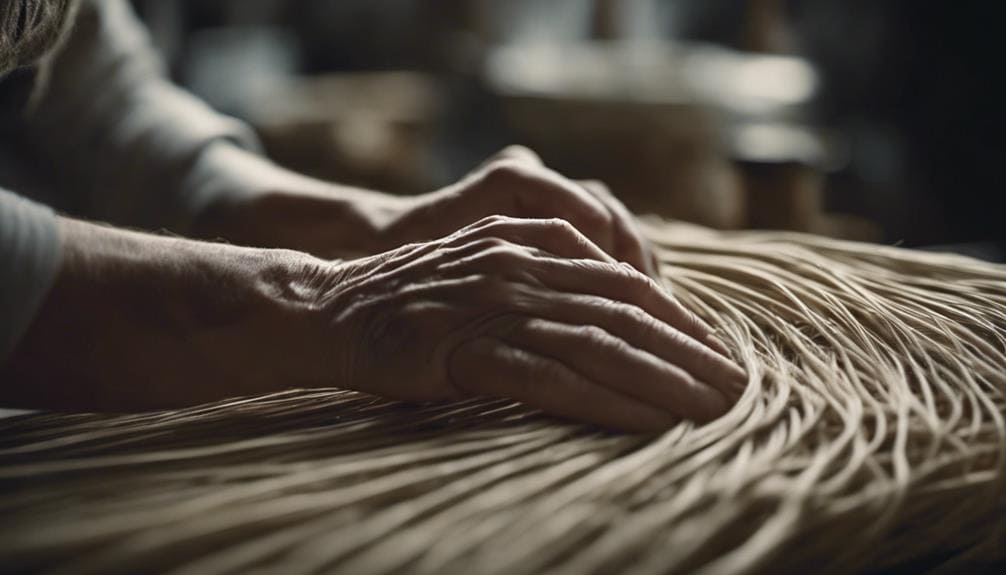
When aiming for tight weaving in Danish cord projects, a key strategy is to ensure the warp centerlines are an odd number to maintain a balanced pattern. This helps create a symmetrical weave that is aesthetically pleasing and structurally sound. To achieve optimal tension control, paying attention to the spacing of the warp pairs close to the rail ends is essential. This prevents any shifting during weaving, resulting in a more secure and tightly woven piece.
In addition to tension control, the thickness of the cord used plays a significant role in achieving tight weaving. Thicker cords may require careful manipulation and tension adjustments to ensure a uniform weave. Utilizing the right weaving tools can also make a difference in the tightness of your weave. Experiment with different tools to find what works best for you, considering factors like weaving speed and precision.
Achieving Seamless Joints

To seamlessly join the warp to the rails in Danish cord weaving, employing the cow-hitch knot ensures a smooth and gap-free connection essential for a flawless finish. This technique secures the warp cords effectively and maintains the desired warp tension throughout the weaving process for a professional outcome. When aiming for seamless joints, paying attention to symmetrical weaving and warp pairs is crucial to achieving a uniform look. Here are some key points to consider:
- Utilize double rails: Double rails allow the cord to reverse direction smoothly without the need for nails, enhancing the overall appearance of the weaving.
- Mark centerlines: Marking front and back rails with centerlines helps achieve symmetrical weaving with an odd number of warp centerlines, ensuring a balanced and visually pleasing result.
- Maintain pattern layout: Keep warp pairs spaced close to rail ends and marks filled in at specific intervals for a secure and visually appealing weaving pattern that highlights the craftsmanship.
- Focus on finishing touches: Pay attention to the finishing touches to ensure the joints are seamless and the weaving project is durable and aesthetically pleasing.
Enhancing Durability With Danish Cord
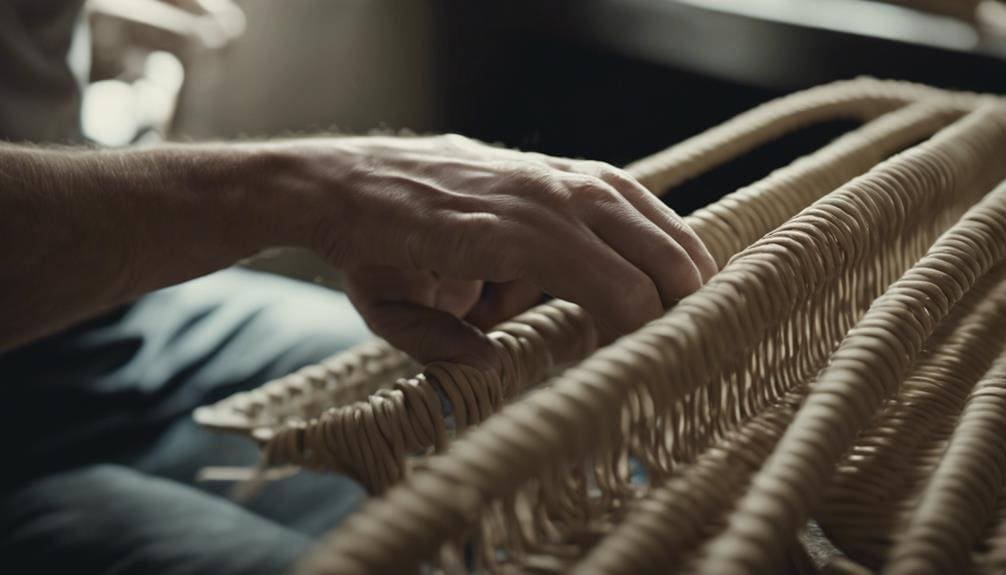
Exploring the reinforcement methods for Danish cord weaving to enhance durability reveals the intricate balance between strength and aesthetics in crafting enduring furniture pieces. Cord tensioning plays a pivotal role in ensuring the longevity of Danish cord seats. By maintaining proper weaving tightness throughout the entire process, we create a visually pleasing design and guarantee a sturdy and resilient seat.
Implementing techniques like cow-hitch knots and double rails adds structural integrity, eliminating gaps that could compromise the durability of the woven cord. Moreover, cord maintenance is key to preserving the lifespan of Danish cord furniture.
Regular care routines and employing longevity strategies, such as avoiding excessive pressure during cleaning, are essential in upholding cord integrity. By paying attention to these details, we not only enhance the piece’s aesthetics but also extend its longevity, creating furniture that stands the test of time in durability and visual appeal.
Innovative Weaving Techniques
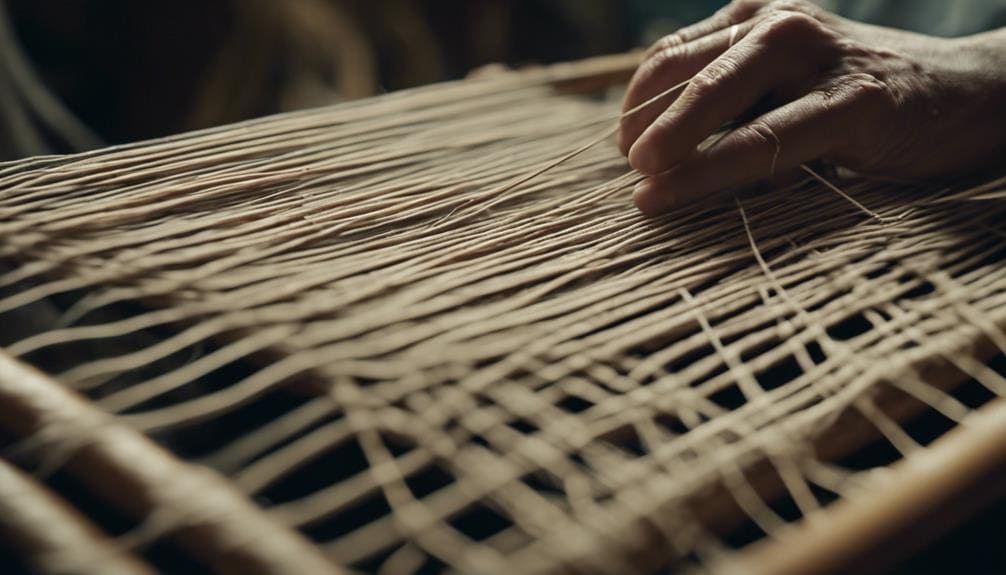
Maintaining a precise tension in the Danish cord weaving process is fundamental to mastering innovative techniques that elevate the final piece’s structural integrity and visual appeal. When exploring innovative weaving techniques, consider the following key points:
- Creative designs: Experiment with unique patterns and textures to push the boundaries of traditional Danish cord weaving.
- Efficient tools: Utilize specialized tools such as weaving shuttles and tension gauges to streamline the weaving process and achieve consistent results.
- Attention to detail: Focus on intricate details like spacing between weaving marks to ensure a cohesive and professional finish.
- Material exploration: Explore alternative materials or combinations with Danish cord to create innovative and contemporary designs that stand out.
Mastering Danish Cord Finishing Touches

With meticulous attention to detail, perfecting the finishing touches of Danish cord weaving elevates the overall quality and appearance of the final piece. Neat trimming and secure tucking of excess cord are essential steps in achieving a polished look. A clean and professional finish is maintained by carefully tucking the cord ends under adjacent rows.
To ensure durability and prevent unraveling, it is crucial to secure the cord ends either with glue or by discreetly tucking them under the weaving. Professional finishing secrets lie in seamlessly blending and trimming the ends. This meticulous process not only enhances the aesthetic appeal but also contributes to the longevity of the Danish cord weave.
Attention to detail in these finishing touches is paramount for creating a high-quality and durable piece that showcases the skill and dedication put into the craft. By mastering these techniques, one can elevate their Danish cord weaving to a professional level that exudes excellence and sophistication.
Frequently Asked Questions
Which Is Better Laced or Unlaced Danish Cord?
I prefer a laced Danish cord for its tighter weave, which is ideal for intricate patterns. Unlaced cord offers a modern look with visible spaces. Tension control techniques vary between the two, laced, providing more structure. Choose based on the desired aesthetic and experience level.
What Are the Different Types of Danish Cord Weaving?
I love exploring the intricacies of Danish cord weaving. With advanced patterns like checkerboard and herringbone, color options are endless. Weaving tools are crucial for precision, and maintenance tips ensure longevity. It’s a beautiful craft.
How Far Apart Do You Space Danish Cord?
Spacing the Danish cord optimally is crucial. I carefully mark rails, keeping cords 7⁄8 to 1 inch apart for sturdy weaving patterns. Odd centerlines ensure balance. This maintenance supports durability and a beautiful finish.
How Much Danish Cord Do I Need?
I calculate Danish cord requirements by measuring seat dimensions. A standard 18′ x 18′ seat needs around 300 feet of cord. For accurate estimates, adjust amounts for larger seats or complex patterns. Adding 10-20% extra is wise.
Conclusion
As I put the finishing touches on my latest Danish cord-weaving project, I can’t help but feel a sense of excitement building. The intricate patterns, expert tips, and innovative techniques I’ve learned have all come together to create a masterpiece I can’t wait to reveal. Stay tuned for the big reveal, where I’ll showcase how Danish cord weaving can elevate furniture restoration to a new level. Get ready to be amazed!


